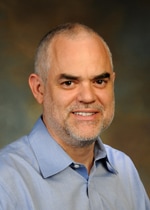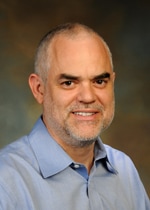
Long-time readers of Nanodot may remember the section of Chapter 15 of Nanosystems in which Drexler explores options for producing easier to design proteins for the protein engineering path toward atomically precise manufacturing by incorporating specially chosen amino acids in addition to the 20 genetically encoded amino acids. Back in 1992 the only option for incorporating unnatural amino acids into proteins was Merrifield solid phase peptide synthesis, using the methods of organic chemistry rather than biological systems. However, this becomes problematic and expensive for longer chains. Consequently, finding ways to expand the repertoire of biologically encoded amino acids would be quite useful. One way to accomplish this goal would be to expand the DNA ‘alphabet’ from two to three base pairs (that is, from four to six ‘letters’). We noted progress in this direction back in February of 2008 when Floyd Romesberg, at the Scripps Research Institute, La Jolla, California created two artificial DNA letters that were accurately and efficiently replicated by a natural enzyme. In September of 2011 we noted a different approach taken by a team at the Salk Institute that keeps the current DNA alphabet but alters one three-letter word to mean an unnatural amino acid, increasing the amino acid repertoire by one. We noted in June of 2012 that continued work by Romesberg had revealed how the new base pair was efficiently replicated in the test tube by a natural enzyme. In a major advance, Romesberg and his collaborators have engineered a living organism to stably propagate the expanded genetic alphabet. The research was published in Nature [abstract] and was nicely described in a news article in Science by Robert F. Service “Designer Microbes Expand Life’s Genetic Alphabet“:
From bacteria to basketball players, all life as we know it encodes genetic information using two pairs of DNA letters. Not anymore. Now, along with the double helix’s two natural pairs—A bound to T and G bound to C—a bacterium growing in a California lab can incorporate and copy a third, artificial pair of letters. For now, the artificial bases—call them X and Y—don’t code for anything, unlike natural DNA base pairs, which in various combinations code for the 20 different amino acids that make up proteins. But the newly expanded genetic code opens the door for synthetic biologists to create microbes capable of building their proteins out of as many as 172 different amino acids, both natural and artificial—a potential boon to drug and materials developers. …
Getting live bacteria to replicate altered DNA was another challenge entirely. The bacteria would need either to synthesize the new genetic letters themselves or to import them from the surrounding culture medium. In algae, Romesberg and his colleagues identified a protein that grabs nucleotide bases and pulls them into the cell. They spliced the gene for this transporter protein into Escherichia coli bacteria and found it enabled the bacteria to pull in presynthesized X and Y bases as well. The team had also engineered their E. coli to harbor small rings of DNA called plasmids carrying X-Y pairs. When the bacteria copied those plasmids, they used the newly imported X and Y bases—yet the engineered cells grew just as well as their native cousins.
Next, Romesberg says he hopes to use his expanded genetic alphabet to create designer proteins. Scripps biochemist Peter Schultz and others have already engineered bacteria to build proteins with dozens of amino acids beyond nature’s standard 20. But those experiments use natural DNA to code for unnatural amino acids. The newly expanded genetic alphabet, Thyer says, should yield a vastly more diverse menu of proteins with a wide variety of new chemical functions, such as medicines better able to survive in the body and protein-based materials that assemble themselves. Romesberg says forays into that new world of proteins are already under way.
An article in The Scientist by Kate Yandell provides additional details “Augmenting the Genetic Alphabet“:
… “This is the first paper to show the possibility that living organisms can have really artificial DNA with [an] expanded genetic alphabet,” Ichiro Hirao, a synthetic biologist at the RIKEN Center for Life Science Technologies in Japan, wrote in an e-mail to The Scientist. Hirao was not involved in the study, but is also working to incorporate synthetic base pairs into living organisms. …
Certain intracellular bacteria and organelles within algae do not create their own nucleotides. Rather, they import key nucleoside triphosphates from their environments via membrane transport proteins. Romesberg and colleagues tested various triphosphate transporters and eventually found that one, from a plastid in a diatom, could import synthetic triphosphates into E. coli. They added a gene for the transporter to E. coli on a plasmid and optimized the cells’ food so that they would ingest the triphosphates.
Romesberg thought that multiple additional challenges remained, including getting the cell’s DNA polymerases to recognize and replicate the base pairs and preventing the cell’s DNA repair mechanisms from recognizing the novel nucleotides as aberrant. But, much to the team’s surprise, the unnatural plasmids immediately began to replicate. …
Romesberg and his colleagues are now working to get RNA polymerases to transcribe the novel DNA into mRNAs. Then they hope to engineer cells to transcribe tRNAs that will read novel codons and translate novel amino acid sequences into proteins. Romesberg suggested that synthetic biologists will eventually build proteins with both natural amino acids currently not used in proteins and amino acids synthesized in the lab. He added that Synthorx, a company created based on his work, and of which he was scientific founder, aims to ramp up the production of synthetic triphosphates. …
From a Scripps news release “Scripps Research Institute Scientists Create First Living Organism that Transmits Added Letters in DNA ‘Alphabet’“:
Scientists at The Scripps Research Institute (TSRI) have engineered a bacterium whose genetic material includes an added pair of DNA “letters,” or bases, not found in nature. The cells of this unique bacterium can replicate the unnatural DNA bases more or less normally, for as long as the molecular building blocks are supplied.
“Life on Earth in all its diversity is encoded by only two pairs of DNA bases, A-T and C-G, and what we’ve made is an organism that stably contains those two plus a third, unnatural pair of bases,” said TSRI Associate Professor Floyd E. Romesberg, who led the research team. “This shows that other solutions to storing information are possible and, of course, takes us closer to an expanded-DNA biology that will have many exciting applications—from new medicines to new kinds of nanotechnology.” …
Romesberg and his laboratory have been working since the late 1990s to find pairs of molecules that could serve as new, functional DNA bases—and, in principle, could code for proteins and organisms that have never existed before.
The task hasn’t been a simple one. Any functional new pair of DNA bases would have to bind with an affinity comparable to that of the natural nucleoside base-pairs adenine–thymine and cytosine–guanine. Such new bases also would have to line up stably alongside the natural bases in a zipper-like stretch of DNA. They would be required to unzip and re-zip smoothly when worked on by natural polymerase enzymes during DNA replication and transcription into RNA. And somehow these nucleoside interlopers would have to avoid being attacked and removed by natural DNA-repair mechanisms. …
The next step will be to demonstrate the in-cell transcription of the new, expanded-alphabet DNA into the RNA that feeds the protein-making machinery of cells. “In principle, we could encode new proteins made from new, unnatural amino acids—which would give us greater power than ever to tailor protein therapeutics and diagnostics and laboratory reagents to have desired functions,” Romesberg said. “Other applications, such as nanomaterials, are also possible.”
Several of the above reports commented that the fact that the two artificial nucleotides have to be supplied to the organism—they cannot be manufactured by the organism—is a strong plus from a safety standpoint. There is no chance of the organisms escaping and replicating in an uncontrolled fashion. Beyond the immediate application of designing better protein folds, the expanded genetic alphabet opens a path for synthetic biology to become a much larger playground for developing very complex systems of molecular machines. Where it will lead seems impossible to predict.
—James Lewis, PhD
